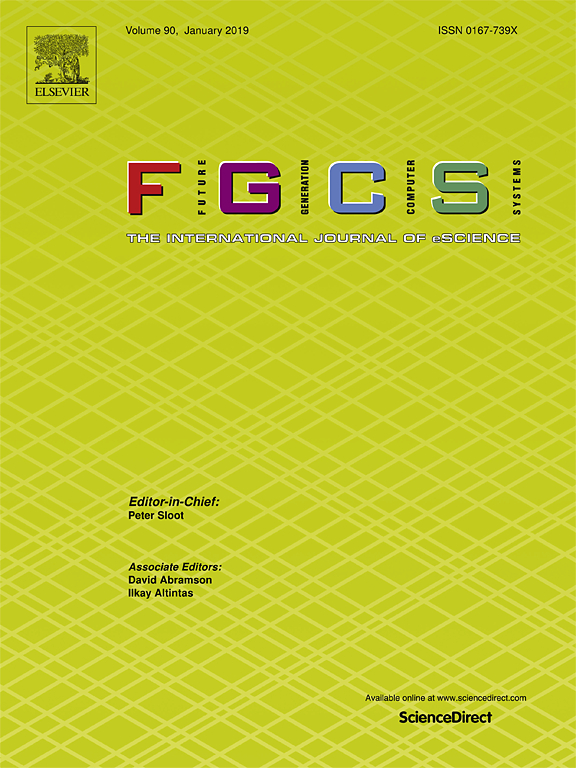Editorial Board
Chaotic improved PICEA-g-based multi-objective optimization for workflow scheduling in cloud environment
SpecMiner: Heuristic-based mining of service behavioral models from interaction traces
Time-constrained and network-aware containers scheduling in GPU era
Future DNA computing device and accompanied tool stack: Towards high-throughput computation
I-Scheduler: Iterative scheduling for distributed stream processing systems
Energy-aware scheduling in edge computing with a clustering method
An affective learning-based system for diagnosis and personalized management of diabetes mellitus
An efficient identity-based proxy signcryption using lattice
Online cloud resource prediction via scalable window waveform sampling on classified workloads
Towards user-centric, switching cost-aware fog node selection strategies
Less-is-Better Protection (LBP) for memory errors in kNNs classifiers
A double-blockchain solution for agricultural sampled data security in Internet of Things network
Data quality-aware task offloading in Mobile Edge Computing: An Optimal Stopping Theory approach
Using deep ensemble for influenza-like illness consultation rate prediction
Embedding reactive behavior into artifact-centric business process models
Handwriting dynamics assessment using deep neural network for early identification of Parkinson’s disease
Improving University Faculty Evaluations via multi-view Knowledge Graph
Neural machine translating from natural language to SPARQL
Self-improving system integration: Mastering continuous change
Detecting impersonation attacks in cloud computing environments using a centric user profiling approach
End-to-end online performance data capture and analysis for scientific workflows
Entity-aware capsule network for multi-class classification of big data: A deep learning approach
An ensemble machine learning approach through effective feature extraction to classify fake news
Predictive data analysis approach for securing medical data in smart grid healthcare systems
An identification strategy for unknown attack through the joint learning of space–time features
Hiding sensitive information in eHealth datasets
A reputation score policy and Bayesian game theory based incentivized mechanism for DDoS attacks mitigation and cyber defense
Deep Graph neural network-based spammer detection under the perspective of heterogeneous cyberspace
Artificial intelligence for securing industrial-based cyber–physical systems
Privacy-preserving blockchain-based federated learning for traffic flow prediction
Multi-view clustering toward aerial images by combining spectral analysis and local refinement
An intelligent vehicle image segmentation and quality assessment model
Aesthetic assessment of website design based on multimodal fusion
Complicated robot activity recognition by quality-aware deep reinforcement learning
A fast and scalable authentication scheme in IOT for smart living
Akka framework based on the Actor model for executing distributed Fog Computing applications
Dynamic fog-to-fog offloading in SDN-based fog computing systems
An evolutionary fuzzy scheduler for multi-objective resource allocation in fog computing
Cryptographic Framework for Role Control Remedy: A Secure Role Engineering mechanism for Single Authority Organizations
Formal approach to thwart against insider attacks: A bio-inspired auto-resilient policy regulation framework
Graph convolutional networks for graphs containing missing features


